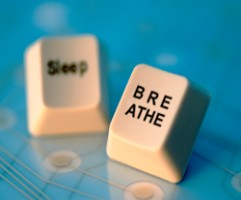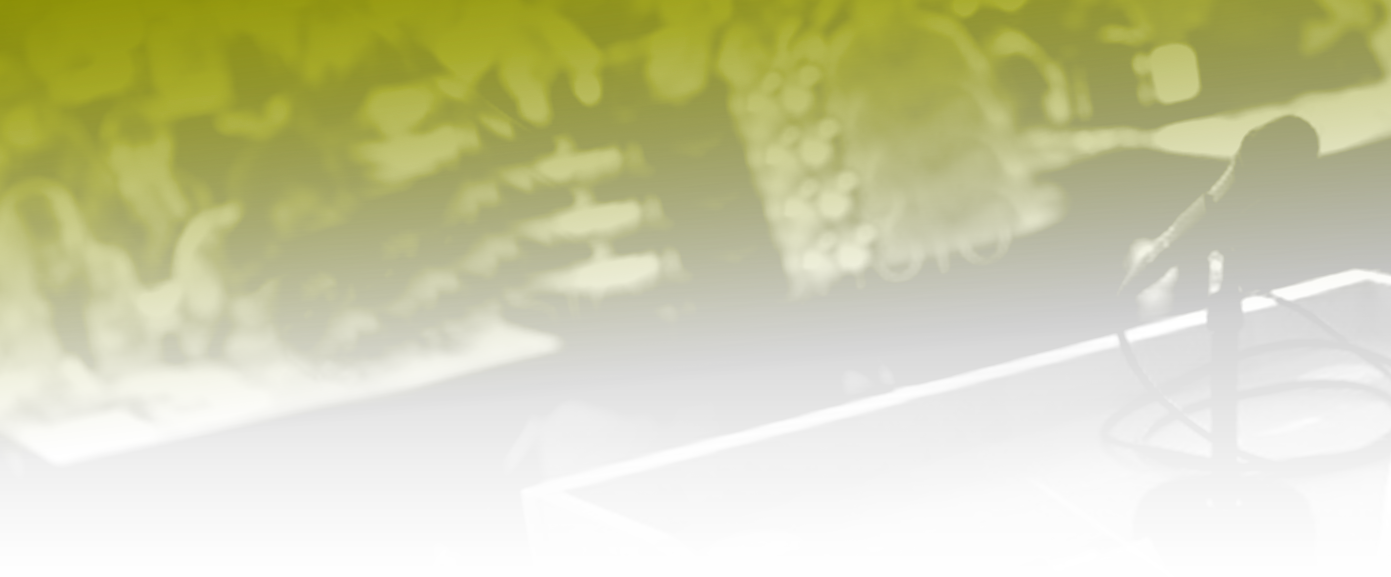By Valerie Galvin, January 19th, 2023
I am a witness. Over more than three decades it has been my joy and privilege to work with people who have had the courage to take on the mantle of leadership. I have been privy to the challenges, victories and heartbreaks that every person in a position of authority experiences. I am acutely aware of what a monumental task it is to evolve from a person in authority – one who has power over others – to become a responsible Leader.
When we accept the invitation to lead, the cost of not having the tools or awareness to recognize and address the fundamental issues of our own humanity can be serious and lasting.
There are certain assumptions about corporate success that most people accept. When you are good at your discipline, you get promoted. You have authority and you are expected to get a group of other people to do their job well too. You succeed at that. You excel in the arena of tactical solutions. And so, you are promoted. More authority, more people, in more layers. And now you are called a Leader.
Now, you are swimming in a different fish tank – the ‘Leader’ fish tank – where the work is something your years of education didn’t cover. You are no longer solely drawing upon your training as an engineer, accountant, marketer, scientist. Now, your work is to understand and discern the complex nature of human being. Suddenly you are expected to be parent, brother, sister, friend, guru, therapist, fortune teller, mentor, director or general – all those roles, depending on who is interacting with you. Because the people around you are looking to feel safe. And many are looking to you to have that happen – not just those under you in the hierarchy, but those beside and above you.
All of these expectations largely lie under the surface. They live in the unspoken. They are part of the water you are swimming in, in this fish tank called corporate culture. And so, you realize you had better learn about how to be a good Leader. You read leadership books and go to courses. Before long, you have a pretty good idea of what a Leader is supposed to do. You are inspired and put some practices into place. Likely, after a bit, the emergencies, the troublesome people, the messiness of daily life, bleed back in. And you drift back to the familiar, to your own semi-conscious drive to feel safe. To your own humanness.
So, what next?
The accepted wisdom, these days, is that as a Leader, you foster collaboration and empower your people. You create an atmosphere of clarity. You enroll your people in a compelling vision and provide a direct way forward, all while practicing humility, kindness and transparency. Authentically, of course. While you’re at it, you are creating strategy, executing consistently and generating stellar results.
The challenge is that this worthy council is predominantly outward facing. It is a description of how you should be with other people – how they should experience you. I have seen less reference to what needs to happen, inside the skin of every human in a position of authority, in order to consistently have all those things happen. How do you experience yourself? How much space do you grant yourself for that inquiry?
I have concluded this: Everything that occurs in your interactions with other people is a direct reflection of your relationship with yourself. When you accept the role of a Leader, there will be inevitable circumstances where your unaddressed human challenges will in some way be reflected in the behavior of the group of humans that you lead. If there is an atmosphere of threat, or a lack of clarity … the source of the solution rests first inside your skin.
Ask yourself: Am I willing to meet myself as I am … the anxiety, pettiness, jealousy, vindictiveness, irritation, judgement, impatience, the creeping fear that I am not enough? As well as the courage, the brilliance, creativity, ingenuity, kindness, compassion, sensitivity, vision and drive to succeed?
Are you willing to meet all that, with generosity? Enough generosity to declare, truthfully, “Right this moment, I accept it all. I am responsible.”
The leader’s challenge is the human challenge … to have the courage and generosity to create this relationship with yourself first. When that happens, that generosity moves outward. It informs every interaction. Creates every atmosphere. Informs every decision.
Born inside this atmosphere of generosity is the capacity for personal responsibility. With it comes the possibility that a group of people can meet and work together towards a shared vision. This can happen because you have the courage to choose to be responsible for your experience and generate the atmosphere that invites every other person to do the same.
I believe that when you choose to call yourself a Leader, you are bound to a commitment to two human principles – to know yourself and to do no harm – to the best of your ability, in any given moment. When this happens, everyone has agency to choose responsibility, and to grapple with the inevitable complexities, and conflicts, that appear when human beings join forces to make something happen.
This commitment lives itself out through a lifetime. It resides in the character of every interaction and every choice. It requires that you exercise the courage to acknowledge your fallibility and your magnificence, your capacity to do good and your capacity to do harm. With the power of authority comes this truth – the well-being of flesh and blood human-beings rests in your hands. That is what you have signed up for. With the honest taking up of this gauntlet, greatness is possible.
One thing! Greatness doesn’t happen solo. Finding clarity benefits from the support of speaking your experience to a generous listener – whether it is a mentor, a coach or a friend. That choice, in itself, is an act of leadership courage.
By Valerie Galvin, September 28th, 2019
I am noticing a trend. My clients are being asked to produce more … more content, more results… in less and less time. My husband has an expression for this – drinking from a fire hose. Collectively we seem to be living in the interpretation of reality that says “in this world of exponential change we have to react quickly … or perish. This is an accepted assumption in organizations and individuals within them.
This atmosphere of urgency plays out in how our days are structured. Back to back meetings, as if we could magically move from the second floor to the sixth in the blink of an eye. 30-minute meetings that have fifteen agenda items, or that don’t have an agenda at all. 20-minute presentations that have 50 slides. Requests to immediately mobilize a team on a new project. All urgent.
So… we are dominated by this atmosphere of urgency – a rhythm that isn’t anyone’s – seemingly embedded in the walls of the building.
I don’t see this changing in most organizations. The bigger question for us, as individuals, is this … How do I find a way to thrive within this reality? How do I find my own rhythm, and still respond powerfully to external demands?
We could look to the big response – the ever-unattainable work/life balance – or look to the micro. There is an ever-present rhythm occurring in your own body. Always. You are breathing. That breath is creating movement. That movement has a rhythm that is always responding. It is you. Unique.
What if an incremental shift of your attention – for a moment – could produce sustainable results – in your energy and in the ease with which you enter your next meeting, or have that difficult conversation?
Try this, as an experiment – use moments of transition. You finish a call. Stop. For a moment. Choose to shift your attention from thinking to simple sensation. Sense your feet. Notice your butt on your chair. Place your hand on your upper abdomen, where your ribs curve up. We’ll call that your Core. Notice that there is movement there. Hallelujah! You are breathing. Notice the movement. That’s it. Then make that next call.
Elapsed time? 5 seconds. In those 5 seconds you have space. And therefore renewed access to your inner resources – clarity, focus, responsiveness, energy.
Those spaces are everywhere. In the walk from one meeting to another. In the transition from one task to another. In the space between thoughts. We just don’t notice. Our attention is on what just happened or what’s about to happen. On the chatter between our ears.
What if noticing yourself in your body, for a moment, could increase your efficiency exponentially? That incremental shift?
Here’s a little formula to experiment with:
When you are sitting: Feet, Butt, Core (Breath is moving!)
When you are standing: Feet, Knees (let them soften), Core (Breath is moving!)
CREATING
AN
ATMOSPHERE OF LISTENING
Each of us has the power to profoundly influence the atmosphere of the groups within which we live and communicate. It means being fully responsible for our own experience – for the sensations we recognize within ourselves, the emotions we either allow or resist, the intuition we heed or do not, and the thoughts to which we choose to give power. The more we are aware of what is driving our experience – physical, emotional and mental – the more we can be at choice, and as leaders, create a team where receptivity, responsiveness, trust, curiosity and healthy debate are the air we breathe.
ALREADY LISTENING
This is where we are driven by our background conversations. The thoughts can sound like this, “She doesn’t respect me.” “That’s never going to work.” “I’ll never get a word in edgewise.” “These people are living in la-la land.” “We’ll never pull this off.” These thoughts are familiar, repetitive and invariably negative. Everything that is said to us, especially in situations of stress, is heard through the filter of this already listening. And the outcome is a foregone conclusion.
GENEROUS LISTENING
When we choose to receive ourselves generously, by sensing ourselves in our physical body, by sensing the movement of breath in our body, we are creating a state of being in which we are listening to ourselves generously. This generosity also emanates outward, naturally. And we are better able to consciously offer it. So … rather than unconsciously projecting our background conversation onto another person, we can intentionally choose to receive, be curious, and recognize him or her as a separate being who has an entirely unique experience and a valuable viewpoint to contribute.
BEING IN RECEPTIVENESS
Receiving ourselves and others allows us to:
RECEPTIVENESS
A state of being we find within ourselves
- In receptiveness, I have “choice”
- In receptiveness, I can be with conflict as a creative force, both within myself and with other
- In receptiveness, I find trust … in myself and the world
- In receptiveness, I sense my Self
- In receptiveness, my perception is sharpened – I can discern what’s going on
RESPONSIBILITY
A way of being that I choose
- How I relate to current circumstances and the future
- I can take the stand – “I am responsible”
- Absence of blame or credit – the power to courageously contribute
- Gives me the ability to discern my experience from another person’s – own rhythm/other rhythm
IT ALL STARTS WITHIN!
Your allowed breath offers you yourself. The foundation is physical. Just by sensing the movement of breath, and therefore being aware of your Self, living in your physical body, the gate opens to real, satisfying and productive communication with others.
Ask yourself, “What if I have the power …within me … to generate my internal state of being and therefore the external atmosphere … and so impact the outcome?”
What if, as leaders and as human beings, we could live our days with this intention:
Every day, may I meet every person,
including myself, as if for the first time.
May I speak to them
as if it is my last opportunity.
How do you prepare a presentation? If you are like many people, the common approach is to begin at the beginning…
“How do I start? What information do I want to present?”
First we scramble to organize reams of material so it will flow logically, so we can fit it all in, so we can provide loads of information. Because that is what we think is important.
We end up sure that those 30 slides are essential to our success. And the die is cast. How many of us, as audience members, have been subjected to death by PowerPoint? How often do we have to struggle to stay focused as a deluge of information comes at us?
Yes, we have access to a wealth of information. The problem is that many people done’t know how to start and worse, don’t know where or how to stop. We offer it all, hoping that somehow, some of what we say will stick.
The place to start is to know what you are there for. Your job as a presenter is never to simply provide information. If that is your reason for being in front of your audience, then save everybody time and send an email.
Your job, as a presenter, is to light fires in people.
How? Try this … begin with the why.
- What specific actions do you want your audience to take because of seeing your presentation?
- How exactly do you want them to think differently?
- What exactly do you want them to do differently?
- What fire do you want to set within each person, so that they leave your presentation determined to think … be … do … in a new way?
We gather in meetings and presentations, not to get more information, but with the secret hope that in coming together our world might look a little different. So next time you present, remember this – your audience is looking for your humanity, not just your information.
Knowing why you are there and what change you want to create gives you access to you power as a communicator. The information then becomes a vehicle for you to make a difference, with these people, right now.
What come next, after the Why? Solve problems. Tell authentic stories that illuminate and give real meaning to your solutions.
Want to know more about the solving problems part? Stay tuned for my next blog post.
Have questions or a desire/need to elevate your communication and presentation skills? Contact Valerie now at valerie@standanddeliver.ca.
If Not Why Not?
What is it that makes one person compelling in front of an audience or in a meeting, while another can’t seem to get their message across? Many people assume the answer is in the quality of the content. If the message is there, how it is delivered doesn’t matter all that much. But have you ever felt that you had something valuable to say that just wasn’t granted the importance it deserved? Did you know why?
There is a very real aspect of performance in every human interaction. We are visual beings. We make judgments in seconds that absolutely dictate our subsequent attitude. And the judgment we don’t make visually, we make in response to what we hear. Not the words, but the quality of the voice that is speaking them, the feeling that the sound of that voice is evoking in us. These responses are almost completely unconscious, but make up over 90% of our decision – is this person worth listening to, or not?
Clearly, then, it is crucial that we hone our skills as performers. A command of the two most powerful influences of all – the voice and the body – will allow us to access the deeper qualities that make our communication brilliant.
When it comes to presenting to an audience, or even taking part in a meeting – accessibility, vitality, authenticity and sheer force of personality are what allow the words to get from your mouth to the listeners’ ear. These qualities conspire to create that seemingly magical ability to ‘connect’ with an audience.
Every individual has some unique attribute that, if confidently allowed expression, captures the listeners’ attention. They naturally desire to know more, to hear more. The challenge is to recognize and eliminate the limiting habits that, to one degree or another, all of us have. Then we can freely express that special quality that makes each of us…interesting.
Authentic speaking, openness, focus, the courage to risk vulnerability and the ability to convincingly take a stand are all characteristics of a powerful public speaker, a powerful leader and a powerful human being. Developing these skills allows for the most important attribute of all – the ability to genuinely be aware of and listen to others, so that they come away stirred by a sense of their own uniqueness and their own passion.
Accomplish this, and you have transformed from a good presenter to a truly inspiring communicator.
 At first, many business people I work with are pretty skeptical when I mention ‘the breath’. Then they experience how dramatically their impact on others shifts – when they simply take the time to sense their own breath. This is a simple, and seemingly magical shift… from looking for all the answers in your intellect to having access to to ALL your intelligence – intellectual, emotional, intuitive and physical. We are, after all, physical beings. And when we are attempting to communicate with one other, our bodies, our voices, our eyes, even our skin are communicating far more deeply and immediately than the words coming out of our mouths. It would benefit us, then, to have a sense of ease and command of these parts of ourselves. All too often, the stress of an important meeting or a big presentation has the body, the voice, the eyes… our presence in general… communicating a very different message from the one we intend.
At first, many business people I work with are pretty skeptical when I mention ‘the breath’. Then they experience how dramatically their impact on others shifts – when they simply take the time to sense their own breath. This is a simple, and seemingly magical shift… from looking for all the answers in your intellect to having access to to ALL your intelligence – intellectual, emotional, intuitive and physical. We are, after all, physical beings. And when we are attempting to communicate with one other, our bodies, our voices, our eyes, even our skin are communicating far more deeply and immediately than the words coming out of our mouths. It would benefit us, then, to have a sense of ease and command of these parts of ourselves. All too often, the stress of an important meeting or a big presentation has the body, the voice, the eyes… our presence in general… communicating a very different message from the one we intend.
How to get all these things back within our reach? The breath.
And not a complex breath exercise that’s another thing on your ‘should learn to do better’ list. Simply by paying attention… and letting your breath come and go – on its own. That’s it. Try it for yourself. Tomorrow, when you get to your desk, take two minutes for this experiment. Before you pick up that phone, or tackle the first email, put your attention to the physical sensation of breath movement in your body – you might feel your belly or your chest or your ribs move with each breath cycle – inhale, exhale, pause. Let three of those breath cycles come and go on their own, simply paying attention to the SENSATION of the breath movement. Out of your head…into sensation. Don’t DO anything. Just for a minute! Then see how easy that phone call is. Or how quickly the email gets handled.
This just might be a new ‘simple tool’ in your arsenal to help you handle that next tough meeting.

 At first, many business people I work with are pretty skeptical when I mention ‘the breath’. Then they experience how dramatically their impact on others shifts – when they simply take the time to sense their own breath. This is a simple, and seemingly magical shift… from looking for all the answers in your intellect to having access to to ALL your intelligence – intellectual, emotional, intuitive and physical. We are, after all, physical beings. And when we are attempting to communicate with one other, our bodies, our voices, our eyes, even our skin are communicating far more deeply and immediately than the words coming out of our mouths. It would benefit us, then, to have a sense of ease and command of these parts of ourselves. All too often, the stress of an important meeting or a big presentation has the body, the voice, the eyes… our presence in general… communicating a very different message from the one we intend.
At first, many business people I work with are pretty skeptical when I mention ‘the breath’. Then they experience how dramatically their impact on others shifts – when they simply take the time to sense their own breath. This is a simple, and seemingly magical shift… from looking for all the answers in your intellect to having access to to ALL your intelligence – intellectual, emotional, intuitive and physical. We are, after all, physical beings. And when we are attempting to communicate with one other, our bodies, our voices, our eyes, even our skin are communicating far more deeply and immediately than the words coming out of our mouths. It would benefit us, then, to have a sense of ease and command of these parts of ourselves. All too often, the stress of an important meeting or a big presentation has the body, the voice, the eyes… our presence in general… communicating a very different message from the one we intend.
